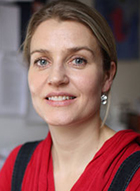Busing Policy for Children with Danish as a Second Language
Busing policy for Children
with Danish as Second Language
Children’s friendships are often created in school; they learn from their classmates and are part of a community of learning with other children in their class. Thus, a child’s classmates are expected to be important for, how a child is doing in school. However, parents’ choice of school depends on where the family lives. If socioeconomically advantaged and disadvantaged parents don’t live in the same neighborhood, their children will rarely be in the same class. But it does not have to be that way. In Aarhus Municipality, a policy of school referral for children with Danish as their second language has been practiced to create more mixed classes since 2006. Which effect does that have on the pupils?
Period: | 2014 – 2017. |
Target group: | Children with Danish as second language and their classmates. |
Number of participants: | All bilingual children in Aarhus Municipality, who turned 6 years old after 2005. |
Intervention: | In Aarhus Municipality all bilingual children are language screened to decide if the child needs more linguistic support consisting of a class for newly arrived children or a special class. Pupils, who are rated to have a need for extra linguistic support, are enroled at a school in Aarhus. This school is not necessarily in the neighborhood, but it is chosen on the basis of its pupil population. The purpose is to prevent a high concentration of bilingual pupils in only a few schools.
The policy of school referral is orchestrated so that bilingual children, who passed the language test, were given free choice of school. Thus, they are able to choose the local school, while those who did not passed the language test were not given a free choice of school. A substantial amount of these children were assigned to a school in another school district in Aarhus, if it wasn’t against the child’s interest. |
Research: | The effect evaluation uses a so-called regression discontinuity design (RD-design), which compares the pupils who almost passed the language test with those who did not and those who only just passed the test. Just about the intersection point in the language test, marginals decide, if a child passes or fails the test. Therefore, one can expect the children to be – almost – alike in both the language test and on other parameters. The test results decide if the child is assigned to a school in another school district or is given free choice of school. Thus, it is possible to analyze the effect of the policy of school referral by comparing children from each side of the intersection point over a period of time. The effects of the policy of school referral are analyzed based on register data with information about the children’s choice of school, number of school moves, school absenteeism, results in the national test and the parents’ satisfaction with school. |
Partners: | Aarhus Municipality, TrygFonden. |
Results: | Expected in 2017. |



